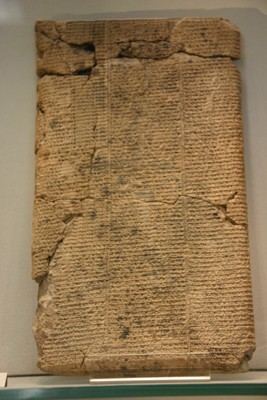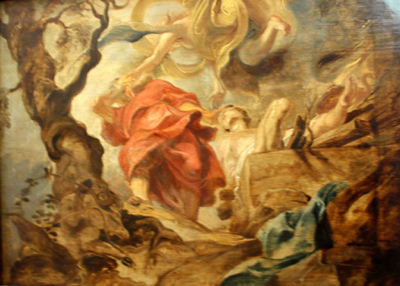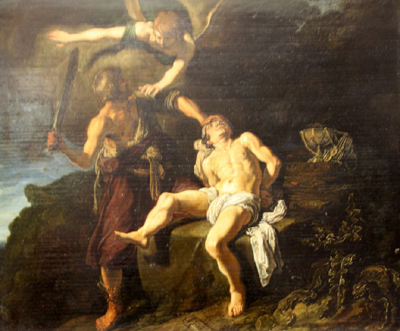Un jour, Une Œuvre,
12/02
Lament for the Destruction of Ur AO 6446 Around 1800 BC Clay Richelieu room 2 showcase 6 (1) This document belongs to a well-established genre of Mesopotamian literature known as ‘ laments for destroyed cities ’. The author strives to ascribe
the fall of Ur to a divine project.
A Sumerian text of lamentation of Ur,
a theme repeated in the biblical book of Lamentations
This is a theological perspective not to be found in the Bible. Similarities may be drawn between this Sumerian text and the Book of Lamentations, written shortly after the fall of Jerusalem. These five lyrical poems express the great pain caused by the siege, the reasons for the destruction and the hope of restoration. A145
A prosperous Sumerian city-state, Ur occupied a strategic position at the extreme east of the Fertile Crescent. Long after its reconstruction, its glorious past and the fall of the third dynasty around 2000 BCE were still being mourned. The biblical name makes reference to the Chaldeans (‘Ur of Chaldea’ ’Genesis 11:28, note). It was the country of Abraham and his family before their migration to ‘the land’ showed to them by God. - Genesis 11:31; 12:1.
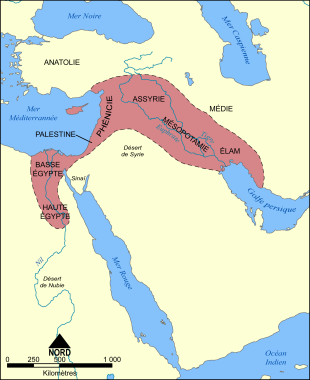
The excavations carried out in Ur clearly show that in leaving this city when it was at the height of its power, Abraham made a considerable material sacrifice. But the patriarch “was awaiting the city having real foundations, the builder and maker of which [city] is God.” (Hebrews 11:8-10). The Bible calls him “the father of all those having faith.” (Romans 4:11) and “by means of your seed all nations of the earth will certainly bless themselves.” - Genesis 22:18.
The Sacrifice of Isaac by Abraham MI 962 Peter Paul Rubens Siegen (Westphalia), 1577 - Antwerp, 1640
The Angel of the Lord Preventing Abraham from Sacrificing his Son Isaac RF 920 Pieter Lastman A painting influenced by great Venetian painting (Veronese), which was in turn to leave its mark on Rembrandt, a pupil of Lastman and painter of works on the same theme (in 1635 and 1636). The biblical subject is taken from Genesis (22, 1-14) www.louvre.fr
Ur, birthplace of Abraham, the center of worship
of the moon-god Nanna and his Babylonian equivalent, Sin
Ur was the main centre of
the cult of the Sumerian moon-god Nanna and
his Babylonian equivalent, Sin.
Considered the father of
the sun, Shamash, he is one
of the most important deities
of the Assyro-Babylonian
pantheon.
The immense ziggurat erected for this god is one of the best preserved in Iraq A145
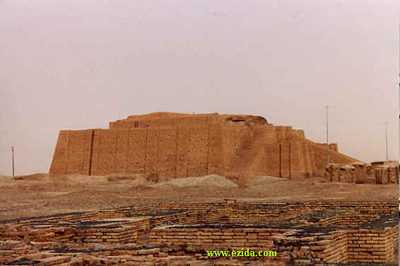
In Egypt, where Abraham and, much later, the people of Israel stayed, the cult of the moon was practised in honour of the god Thoth, often represented with the head of an ibis. A146 The moon was sometimes worshipped under the symbol of the goddess Ashtoreth (Astarte), represented as the companion of the god Baal, and the Israelites allowed themselves to be frequently seduced by the cult of these two divinities (Job 31:26-27; Judges 2:13). Chaldean astrologists considered the new moon as a propitious moment to announce the future (Isaiah 47:13). Shadrach, the name given to one of Daniel’s three co-captives, perhaps signifies “Command of Aku”, the Sumerian moon-god (Daniel 3:12). The first day of the week inherited its name from the ancient cult of the moon.
